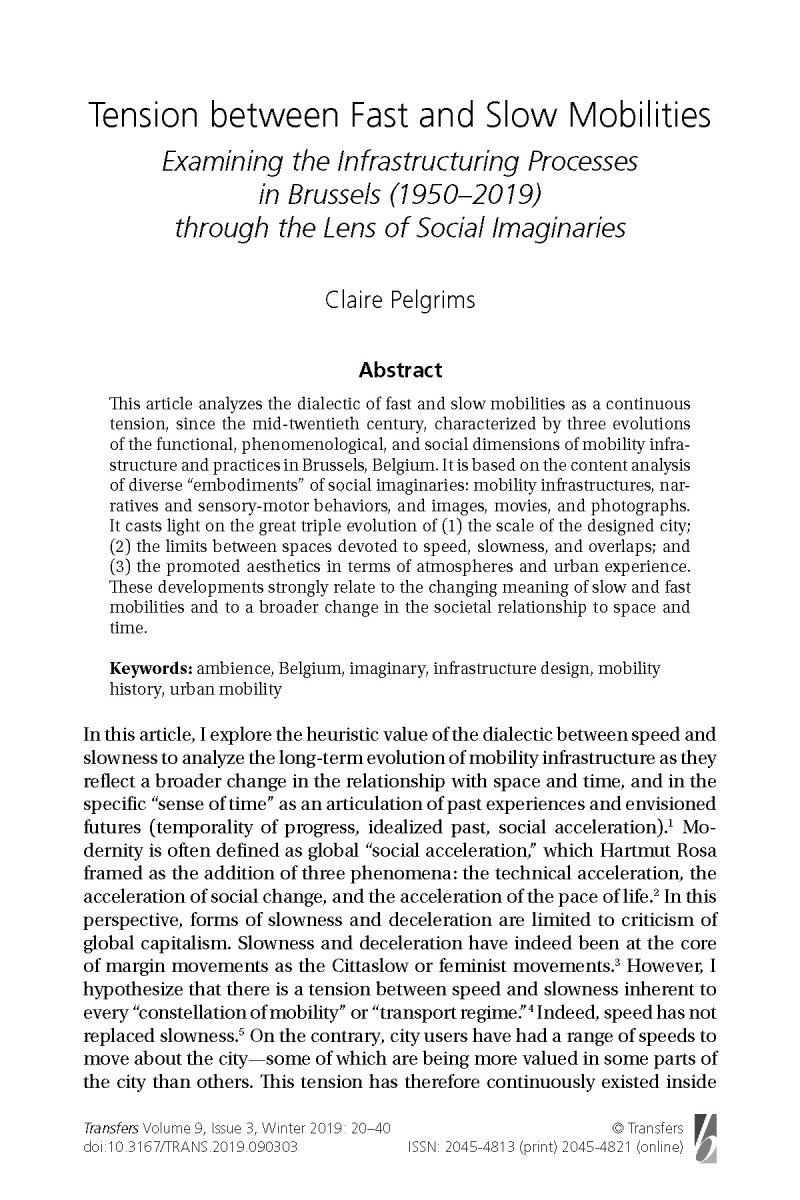Tension between Fast and Slow Mobilities. Examining the Infrastructuring Processes in Brussels (1950–2019) through the Lens of Social Imaginaries
This article analyzes the dialectic of fast and slow mobilities as a continuous tension, since the mid-twentieth century, characterized by three evolutions of the functional, phenomenological, and social dimensions of mobility infrastructure and practices in Brussels, Belgium.
It is based on the content analysis of diverse “embodiments” of social imaginaries: mobility infrastructures, narratives and sensory-motor behaviors, and images, movies, and photographs. It casts light on the great triple evolution of (1) the scale of the designed city; (2) the limits between spaces devoted to speed, slowness, and overlaps; and (3) the promoted aesthetics in terms of atmospheres and urban experience. These developments strongly relate to the changing meaning of slow and fast mobilities and to a broader change in the societal relationship to space and time.
Pelgrims, C. (2019). Tension between Fast and Slow Mobilities.: Examining the Infrastructuring Processes in Brussels (1950-2019) through the Lens of Social Imaginaries. Transfers, 9(3), 20-40. https://doi.org/10.3167/TRANS.2019.090303 -> accès pre-print: https://dipot.ulb.ac.be/dspace/bitstream/2013/303571/3/Pelgrims_TensionBetweenFastAndSlowMobilities.pdf
